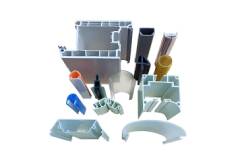The custom plastic cable pipe supplier introduces you to the difference between blow molding and injection molding process.
Blow-molded products are hollow; injection molding has an injection port, so the molded product will have a small unnecessary part, and there will be a process to cut it off, but it can be found if you observe carefully;
Plastic strip injection molding (injection molding) is a method of plasticizing thermoplastic or thermosetting molding materials in a heated cylinder first, and then pushing them into the cavity of a closed mold by a plunger or moving screw.
Custom plastic injection profiles are suitable for almost all thermoplastics. In recent years, injection molding has also been successfully used to mold certain thermoset plastics. Injection molding has a short molding cycle (a few seconds to a few minutes), and the quality of plastic injection profiles can be from a few grams to tens of kilograms. Goods. Therefore, the method has strong adaptability and high production efficiency.
Blow molding: a method of using gas pressure to inflate a hot parison closed in a mold into a hollow product or a tube parison without a mold to form a tube film. This method is mainly used for the manufacture of various packaging containers and tubular films.

Injection Profiles
Anything with a melt index of 0.04 to 1.12 is a relatively good hollow blow molding material, such as polyethylene, polyvinyl chloride, polypropylene, polystyrene, thermoplastic polyester, polycarbonate, polyamide, cellulose acetate, and poly Acetal resin, etc., among which polyethylene is the most used.
(1) Injection blow molding: the injection molding method is used to first make plastic into a bottomed parison, and then move the parison into a blow mold to blow into a hollow product
(2) Extrusion blow molding: The plastic strip is first made into a bottomed parison by extrusion, and then the parison is moved into a blow mold to be blown into a hollow product.
(3) Stretch blow molding: Stretch blow molding is a type of biaxially oriented plastic strip blow molding. The method is to first stretch the model in the longitudinal direction, and then use compressed air to inflate to the transverse direction. Stretch. Stretch blow molding can greatly improve the transparency, impact strength, surface hardness, and rigidity of products. It is suitable for blow molding of polypropylene and polyethylene terephthalate (PETP).
(4) Blown film method: A method of forming thermoplastic films. It uses extrusion to squeeze the plastic into a tube, and then continuously expands the tube film to a certain size with the air blown into the tube. After cooling, it is folded and wound into a double-layer flat film